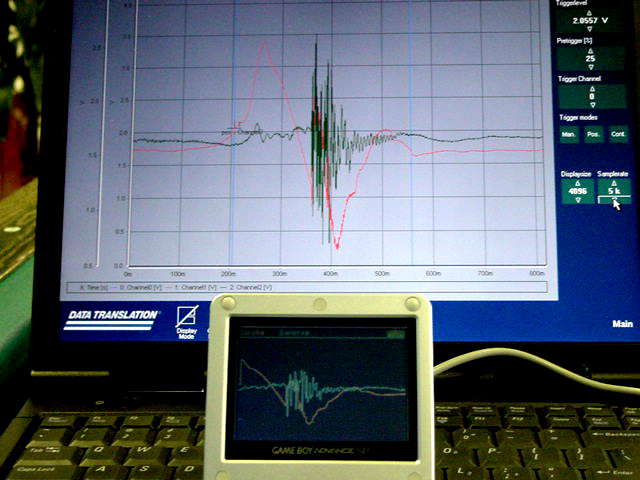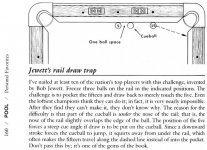This photo shows my cue was decelerating before impact:
It looks like I hit the cue ball about 30msec late.
My theory about why (some say) you can get more action with a slip stroke is that it changes your stroke timing. The stick is getting a few inches head start.
Bob Jewitt and Dr. Dave posted this video showing cue speed for a "medium" pendulum stroke:
https://www.youtube.com/watch?v=LfzUvIzKJR4#t=90
Near the end of the stroke the cue is traveling about 5.5 mph.
Convert this to inches per msec:
5.5 mi x 5280 ft x 1 hr x 1 min x 1 sec x 12 in
------- -------- ----- ------ ------ ------
1 hr 1 mi 60 min 60 sec 1000msec 1 ft
= 0.0968 inches per msec.
I contacted the cue ball 30 msec late, so 0.0968 x 30 = 2.9 inches.
Bingo, with a 2.9" slip stroke I would have contacted the cue ball at max cue speed, compensating for my decelerating cue.

